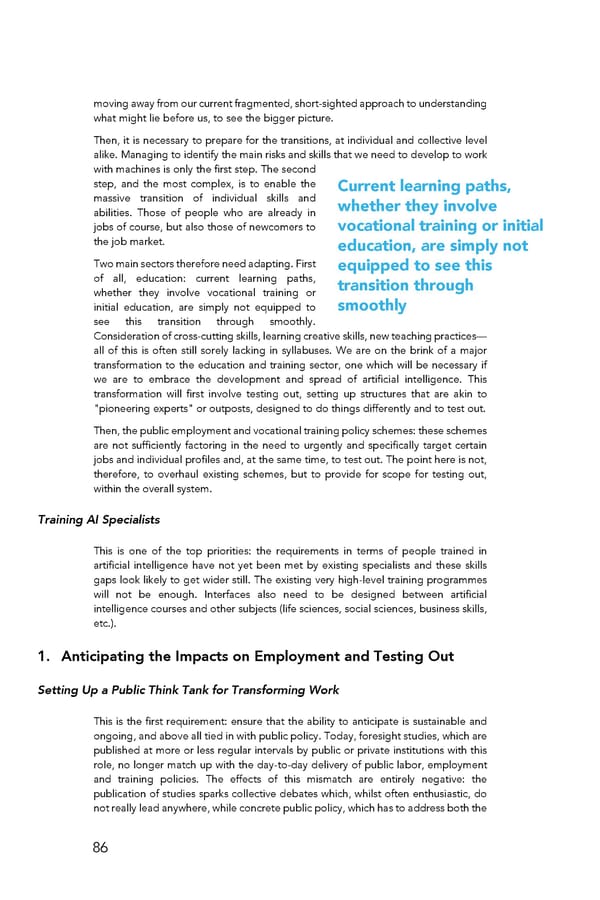moving away from our current fragmented, short-sighted approach to understanding what might lie before us, to see the bigger picture. Then, it is necessary to prepare for the transitions, at individual and collective level alike. Managing to identify the main risks and skills that we need to develop to work with machines is only the first step. The second step, and the most complex, is to enable the Current learning paths, massive transition of individual skills and whether they involve abilities. Those of people who are already in jobs of course, but also those of newcomers to vocational training or initial the job market. education, are simply not Two main sectors therefore need adapting. First equipped to see this of all, education: current learning paths, transition through whether they involve vocational training or smoothly initial education, are simply not equipped to see this transition through smoothly. Consideration of cross-cutting skills, learning creative skills, new teaching practices— all of this is often still sorely lacking in syllabuses. We are on the brink of a major transformation to the education and training sector, one which will be necessary if we are to embrace the development and spread of artificial intelligence. This transformation will first involve testing out, setting up structures that are akin to "pioneering experts" or outposts, designed to do things differently and to test out. Then, the public employment and vocational training policy schemes: these schemes are not sufficiently factoring in the need to urgently and specifically target certain jobs and individual profiles and, at the same time, to test out. The point here is not, therefore, to overhaul existing schemes, but to provide for scope for testing out, within the overall system. Training AI Specialists This is one of the top priorities: the requirements in terms of people trained in artificial intelligence have not yet been met by existing specialists and these skills gaps look likely to get wider still. The existing very high-level training programmes will not be enough. Interfaces also need to be designed between artificial intelligence courses and other subjects (life sciences, social sciences, business skills, etc.). 1. Anticipating the Impacts on Employment and Testing Out Setting Up a Public Think Tank for Transforming Work This is the first requirement: ensure that the ability to anticipate is sustainable and ongoing, and above all tied in with public policy. Today, foresight studies, which are published at more or less regular intervals by public or private institutions with this role, no longer match up with the day-to-day delivery of public labor, employment and training policies. The effects of this mismatch are entirely negative: the publication of studies sparks collective debates which, whilst often enthusiastic, do not really lead anywhere, while concrete public policy, which has to address both the 86
 For a Meaningful AI - Report Page 86 Page 88
For a Meaningful AI - Report Page 86 Page 88